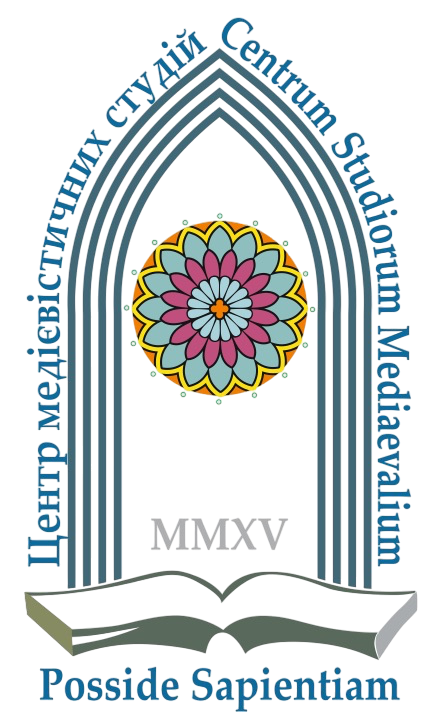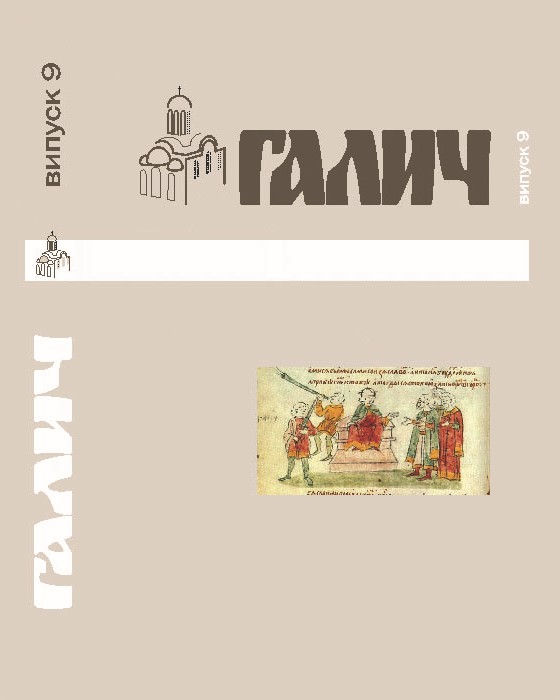МІЖ БЕШКЕТУВАННЯМ І РЕЛІГІЙНИМ ДІЯННЯМ: МОТИВИ СТВОРЕННЯ ГРАФІТІ НА ХРИСТИЯНСЬКИХ ХРАМАХ (НА ПРИКЛАДІ ЕПІГРАФІЧНИХ ПАМ’ЯТОК ЦЕРКВИ СВ. ПАНТЕЛЕЙМОНА В С. ШЕВЧЕНКОВЕ ТА ІНШИХ ЄВРОПЕЙСЬКИХ Й БЛИЗЬКОСХІДНИХ СВЯТИНЬ)
 https://doi.org/10.15330/hal_swc.9.58-98
https://doi.org/10.15330/hal_swc.9.58-98
Ключові слова:
храм Св. Пантелеймона, костел Св. Станіслава, графіті, інскрипції, епіграфікаАнотація
Створення графіті на храмах було поширеним явищем у Середньовіччі та ранньомодерний час. На стінах давніх святинь часто можна побачити написи та зображення різноманітного змісту. Cьогодні така діяльність однозначно сприймається як вандалізм, але мотиви подібних дій у минулому не є настільки очевидними. Насправді графіті могли виконувати різні функції, які виходили за межі бажання пошкодити пам’ятку заради привернення уваги. Люди вкладали у свої написи й малюнки різні ідеї. Метою статті є класифікувати та зрозуміти основні мотиви створення графіті на сакральних спорудах. Джерельною базою для дослідження була обрана епіграфічна спадщина храму Св. Пантелеймона в с. Шевченкове, одного із сакральних об’єктів під охороною Національного заповідника «Давній Галич». Для порівняння та уточнення функцій, які виконували наявні на церкві графіті, використана інформація з настінних написів інших європейських святинь. Наявні факти свідчать, що інскрипції відігравали різноманітну роль. Вони уособлювали релігійний акт, фіксували певну історичну подію або адміністративний вирок, підкреслювали статус людини, передавали певну інформацію, слугували знаками каменярів, магічними символами та навіть прокляттями. Графіті були безпосередньо пов’язані з повсякденним життям, ідеями й особистими переживаннями людей. Вони є знаками часу і відображенням свідомості минулих поколінь. Додатковою метою цієї статті є привернення уваги до важливості вивчення графіті та їхньої ролі як джерела, адже ці написи й зображення можуть надавати унікальну інформацію, не зафіксовану в інших історичних матеріалах.
Посилання
Andrews M. (2023). Cult or contract? Cross mark graffiti in Worcestershire churches. Worcestershire Recorder. № 117. P. 8–10. [in English].
Arribas J. L. (2016). Grafitos medievales. Un intento de sistematizaciоn. Grafitos histоricos hispаnicos I / coord. F. Reyes, G. Vinuales. Madrid. P. 43–58. [in Spanish].
Champion M. (2014). Ill Wishing on the Walls: The Medieval Graffiti Curses of Norwich Cathedral. Norfolk Archaeology. Vol. XLVI. P. 61–66. [in English].
Champion M. (2015). Magic on the Walls: Ritual Protection Marks in the Medieval Church. Physical Evidence for Ritual Acts, Sorcery and Witchcraft in Christian Britain. London, P. 15–38. URL: https://doi.org/10.1057/9781137444820_2. [in English].
Champion M. (2011). Medieval graffiti inscriptions found in All Saints’ Church, Litcham. Norfolk Archaeology. Vol. XLVI. P. 199–208. [in English].
Champion M. (2015). Medieval Graffiti. The lost voices of the England’s churches. London : Ebury Press. 257 p. [in English].
Champion M. (2015). Medieval Ship Graffiti in English Churches: Interpretation and function. The Mariner’s Mirror. Vol. 101. № 3. P. 343–350. URL: https://doi.org/10.1080/00253359.2015.1054691. [in English].
Champion M. (2014). The Graffiti Inscriptions of St Mary’s Church, Troston. Proceedings of the Suffolk Institute of Archaeology. Vol. 43. № 2. P. 235–258. [in English].
Champion M. (2017). The Priest, the Prostitute, and the Slander on the Walls: Shifting Perceptions Towards Historic Graffiti. Peregrinations: Journal of Medieval Art and Architecture. Vol. 6. № 1. P. 5–37. [in English].
Dashkevych Ya. (1999). Symvolika prokvitloho khresta. Znak. № 18. S. 6–8. [in Ukrainian].
Dietrich S. (2018). Die spatmittelalterlichen und fruhneuzeitlichen Graffiti in der Marburger Elisabethkirche – Befund, methodische Herausforderungen und Quellenwert. Historische Graffiti als Quellen. Methoden und Perspektiven eines jungen Forschungsbereichs : Beitrage der Konferenz am Institut fur Klassische Archaologie der LMU Munchen, 20.–22. April 2017, Munchen, 20.–22. April 2017 / Hrsg. P. Lohmann. Stuttgart. S. 169–192. URL: https://doi.org/10.17192/es2020.0006. [in German].
Fleming J. (2001). Graffiti and the Writing Arts of Early Modern England. London : Reaktion Books. 224 p. [in English].
Graves C. P., Rollason L. (2013). The monastery of Durham and the Wider World: Medieval Graffiti in the Prior’s Chapel. Northern History. Vol. 50. № 2. P. 186–215. URL: https://doi.org/10.1179/0078172X13Z.00000000041. [in English].
Hippius O., Mikheiev S. (2020). Akty trokh halytskykh kniaziv XIII st. na stinakh tserkvy Sviatoho Panteleimona (nove prochytannia). Halych. Zbirnyk naukovykh prats/ ed. M. Voloschchuk. Ivano-Frankivsk : Lileya-NV. Vyp. 5. S. 17–44. [in Ukrainian].
Holovko O. (2023). Shche raz pro chas i obstavyny vynyknennia khramu Sviatoho Panteleimona v Halychi. Halych. Zbirnyk naukovykh prats/ ed. A. Stasiuk. Ivano-Frankivsk : Lileya-NV. Vyp. 8. S. 68–104. [in Ukrainian].
Husak A. (2018). Do istorii tserkvy Sviatoho Panteleimona. Zbruc. URL: https:// zbruc.eu/node/76732. [in Ukrainian].
Husak A. (2018). Epihrafichnyi «mohorych» na mezhi XII/XIII stolit. Zbruc. URL: https://zbruc.eu/node/76127. [in Ukrainian].
Husak A. (2018). Taiemnytsi hrafiti na stinakh khramu Sviatoho Panteleimona v Halychi. Likbez. URL: https://likbez.org.ua/ua/ukrayinska-tayemnitsi-grafiti-na-stinah-hramu-svyatogo-pantelejmona-v-galichi.html. [in Ukrainian].
Ingram J. (2015). An initial survey to identify and understand the meaning of medieval graffiti within Chichester Cathedral: distinguishing pilgrim marks from other graffiti and unofficial inscriptions : dissertation for the degree of Bachelor of Arts. Southampton. 88 p. URL: https://doi.org/10.13140/RG.2.1.2702.8648. [in English].
Ingram J. (2021). Landscapes of destination: an archaeology of the experiential and ritual behaviour of Medieval (12th to 16th century) English worshippers at religious centres : thesis for the degree of Doctor of Philosophy. Southampton. 270 p. [in English].
Korniienko V. (2017). Dokumenty kantseliarii halytskoho kniazia Mstyslava Mstyslavovycha na stinakh tserkvy Sviatoho Panteleimona. Halych. Zbirnyk naukovykh prats / ed. M. Voloschchuk. Ivano-Frankivsk : Lileya-NV. Vyp. 2. S. 86–104. [in Ukrainian].
Korniienko V. (2018). Epihrafika sakralnykh pamiatok Halycha (XII–XIX st.) / ed. M. Voloshchuk. Ivano-Frankivsk : Lileya-NV. Ser. 2. Vyp. 3. 528 s. [in Ukrainian].
Lohmann P. (2020). Historical Graffiti: The State of the Art. Jems. № 9. P. 37–56. [in English].
Lohmann P. (2018). Warum sich eigentlich mit historischen Graffiti beschaftigen – und was sind Graffiti uberhaupt? Ein Vorwort zur Einordnung und Bedeutung der Materialgattung. Historische Graffiti als Quellen. Methoden und Perspektiven eines jungen Forschungsbereichs : Beitrage der Konferenz am Institut fur Klassische Arcaologie der LMU Munchen, 20.–22. April 2017, Munchen, 20.–22. April 2017 / Hrsg. P. Lohmann. Stuttgart. S. 9–16. [in German].
Miglio L., Tedeschi C. (2012). Per lo studio dei graffiti medievali. Caratteri, categorie, esempi. Storie di cultura scritta. Studi per Francesco Magistrale / a cura di P. Fioretti. Spoleto. P. 605–628. [in Italian].
Mnatsakanian P. (2017). Virmenski inskryptsii z tserkvy sviatoho Panteleimona v Halychi. Halych. Zbirnyk naukovykh prats / ed. M. Voloschchuk. IvanoFrankivsk : Lileya-NV. Vyp. 2. S. 80–85. [in Ukrainian].
Owen K. (2010). Traces of Presence and Pleading: Approaches to the Study of Graffiti at Tewkesbury Abbey. Wild Signs: Graffiti in Archaeology and History / ed. by J. Oliver, T. Neal. Oxford. P. 35–46. [in English].
Ozcariz Gil P. (2008). Los grafitos del claustro de la Catedral de Pamplona: dibujos destacados y torres medievales. Trabajos de Arqueologнa Navarra. №°20. P. 285–310. [in Spanish].
Ozcariz Gil P. (2008). Nuevos grafitos de San Pedro de la Rua (Estella) y la ermita de La Almuza (Sesma). Cuadernos De Arqueologнa De La Universidad De Navarra. Vol. 16. P. 179–197. URL: https://doi.org/10.15581/012.16.27728. [in Spanish].
Pelenski J. (1914). Halicz w dziejach sztuki sredniowiecznej na podstawie badan archeologicznych i zrodel archiwalnych. Krakow : Akademia Umiejetnosci. 207 s. [in Polish].
Pelenski J. (1911). Cerkiew sw. Pantalemona w Starym Haliczu. Sprawozdania z posiedzen i czynnosci Akademii Umiejetnosci w Krakowie. T. XVI. № 6. S. 4–9. [in Polish].
Plesch V. (2015). Beyond Art History: Graffiti on Frescoes. Understanding Graffiti. Multidisciplinary Studies from Prehistory to the Present / ed. by E. Olton, T. R. Lovata. New York. P. 45–57. [in English].
Plesch V. (2005). Body of Evidence: Devotional Graffiti in a Piedmontese Chapel. On Verbal / Visual Representation, Word & Image Interactions 4. Amsterdam and Atlanta. P. 179–91. [in English].
Plesch V. (2010). Destruction or Preservation? The Meaning of Graffiti on Paintings in Religious Sites. Art, Piety and Destruction in European Religion, 1500–1700 / ed. by V. C. Raguin. Farnham and Burlington. P. 137–172. [in English].
Plesch V. (2002). Memory on the Wall: Graffiti on Religious Wall Paintings. The Journal of Medieval and Early Modern Studies. Vol. 32. № 1. P. 167–197. [in English].
Ritsema van Eck M. (2018). Graffiti in medieval and early modern religious spaces: illicit or accepted practice? The case of the Sacro Monte at Varallo. Tijdschrift voor Geschiedenis. Vol. 131. Iss. 1. P. 51–72. URL: https://doi.org/10.5117/TVGESCH2018.1.RITS. [in English].
Schmitz-Esser R. (2020). Sacred Signs or Mundane Scribblings? A Survey of Medieval Graffiti in Tyrol. Journal of Early Modern Studies. № 9. P. 85–108. URL: https://doi.org/10.13128/jems-2279-7149-11191. [in English].
Slobodian V., Husak A. (2017). Obrazok z zhyttia na zlami ХII–ХIII st. zi stin khramu Sviatoho Panteleimona poblyzu Halycha. Halych. Zbirnyk naukovykh prats / ed. M. Voloschchuk. Ivano-Frankivsk : Lileya-NV. Vyp. 2. S. 105–114. [in Ukrainian].
Stasiuk A. (2011). Serednovichnyi monastyr u Halychi: vid sv. Panteleimona do sv. Stanislava. Visnyk Prykarpatskoho universytetu. Seria Istoria. S. 181–186. [in Ukrainian].
Tolkin Dzh. R. R. (2021). Ser Gavein i Zelenyi Lytsar, a takozh Perlyna i Ser Orfeo / red. K. Tolkin ; per. z anhl. O. OLir. Lviv : Astroliabiia. 336 s. [in Ukrainian].
Treffort C. (1996). Les «graffitis» sur tables d’autel aux epoques pre-romane et romane. Note а propos des inscriptions de l’autel de Gellone. Saint-Guilhem-le-Desert. La fondation de l’abbaye de Gellone. L’autel medieval. Actes de la table ronde d’aout 2002 / dir. : X. Barral i Altet, C. Lauranson-Rosaz. Aniane. P. 137–146. [in French].
Trentin M. G. (2021). Medieval and Early Modern graffiti: multicultural and multimodal communication in Cyprus. Cahiers du Centre d Etudes Chypriotes. Vol. 50. P. 277–304. URL: https://doi.org/10.4000/cchyp.516. [in English].
Vaschetti L. (1986). Graffiti su chiese romaniche dell’Astigiano. Benaco ‘85. La cultura figurativa rupestre dalla protostoria ai nostri giorni: archeologia e storia di un mezzo espressivo tradizionale : Atti del 1° convegno internazionale di arte rupestre, Torri del Benaco, 4–5 maggio 1985 / coord. F. Gaggia et al. Torino. P. 181–214. [in Italian].
Voloshchuk M. (2016). Zhyvotvoriashchyi Khrest Hospoda nashoho Isusa Khrysta v istorii serednovichnoho Halycha (na marhinesi studii Elzhbety Dombrovskoi ta Oleksandra Maiorova). Halych: zbirnyk naukovykh prats / ed. M. Voloschchuk. Ivano-Frankivsk : Lileya-NV. Vyp. 1. S. 35–67. [in Ukrainian].
Vuitsyk V. (1996). Hrafiti XII–XV st. tserkvy sviatoho Panteleimona v Halychi. Zapysky Naukovoho tovarystva im. Shevchenka. Pratsi Komisiyi spetsialnykh (dopomizhnykh) istorychnykh dystsyplin. Lviv. T. CCXXXI. S. 189–194.S. 189–194. [in Ukrainian].
Williams B. (2017). Monsters, Masons, and Markers: An overview of the graffiti at All Saints Church, Leighton Buzzard. Peregrinations: Journal of Medieval Art and Architecture. Vol. 6, № 1. P. 38–64. URL: https://digital.kenyon.edu/perejournal/vol6/iss1/21. [in English].
Wozniak T. (2016). Neuentdeckte Inschriften und Graffiti im ehemaligen St.-Marien-Kloster auf dem Mьnzenberg zu Quedlinburg. Concilium medii aevi. № 19. S. 101–128. [in German].
Wozniak T. (2018). Ritter, Reiter und Bewaffnete im Kontext mittelalterlicher Graffiti. Historische Graffiti als Quellen. Methoden und Perspektiven eines jungen Forschungsbereichs : Beitrage der Konferenz am Institut fur Klassische Archaologie der LMU Munchen, 20.–22. April 2017, Munchen, 20.–22. April 2017 / Hrsg. P. Lohmann. Stuttgart. S. 111–142. [in German].
Wright J. (2017). Cultural anxieties and ritual protection in high-status early modern houses. Hidden Charms : Transactions of the Hidden Charms Conference 2016, Norwich, 2 April 2016 / ed. by J. Billingsley, J. Harte, B. Hoggard. Mytholmroyd. P. 71–81. [in English].
Yasin A. M. (2015). Prayers on Site: The Materiality of Devotional Graffiti and the Production of Early Christian Sacred Space. Viewing Inscriptions in the Late Antique and Medieval Worlds / ed. by A. Eastmond. Cambridge. P. 36–60. [in English].









